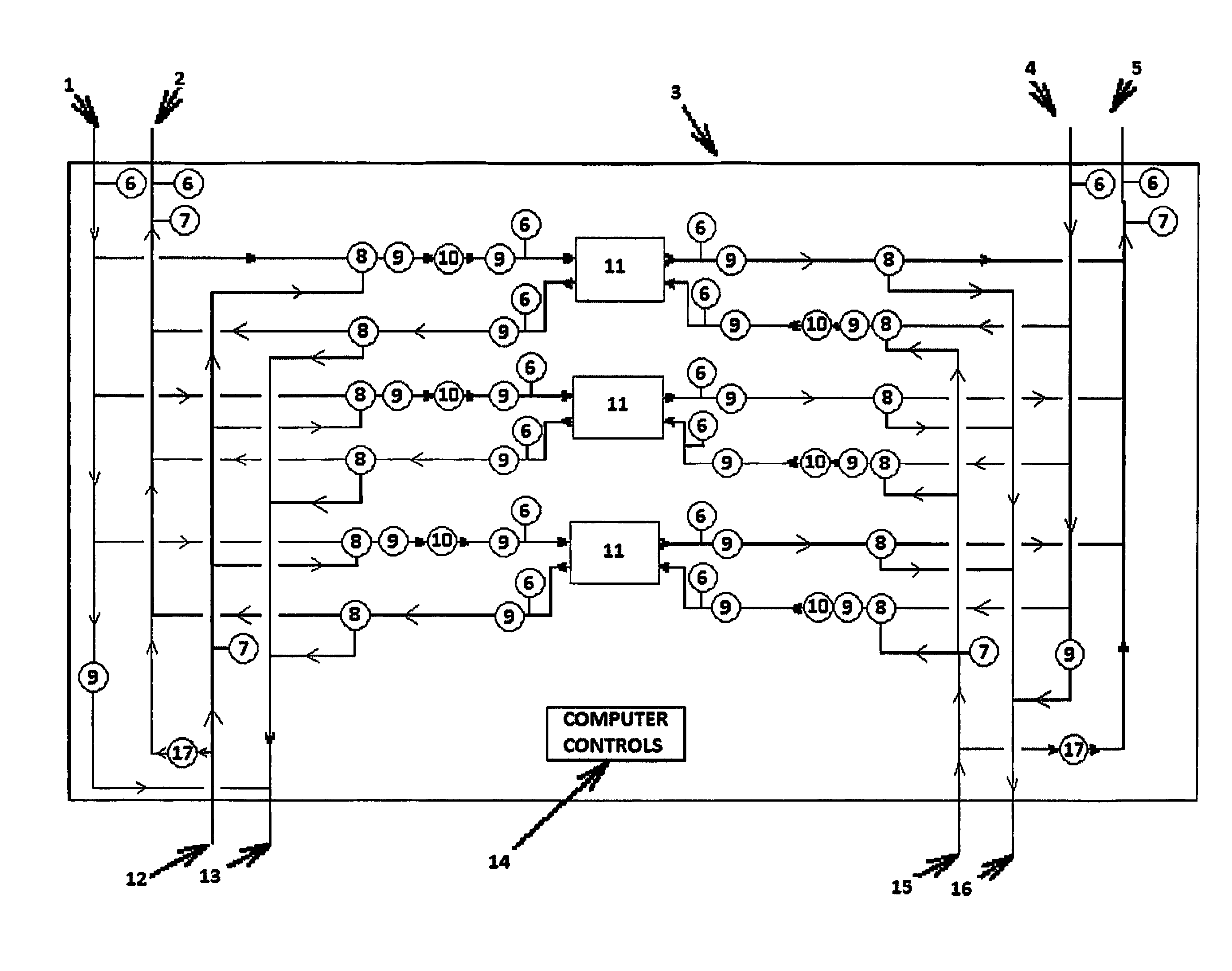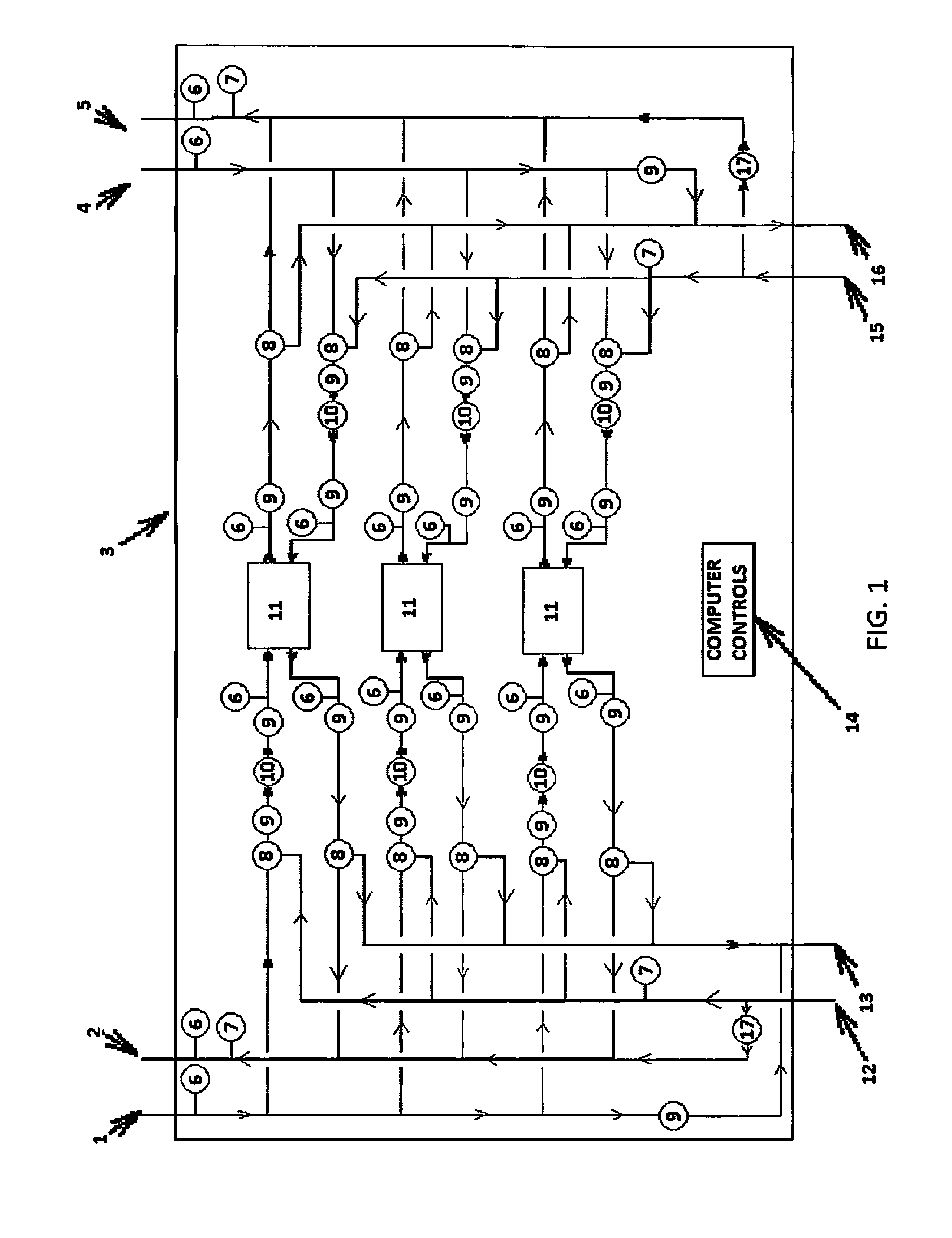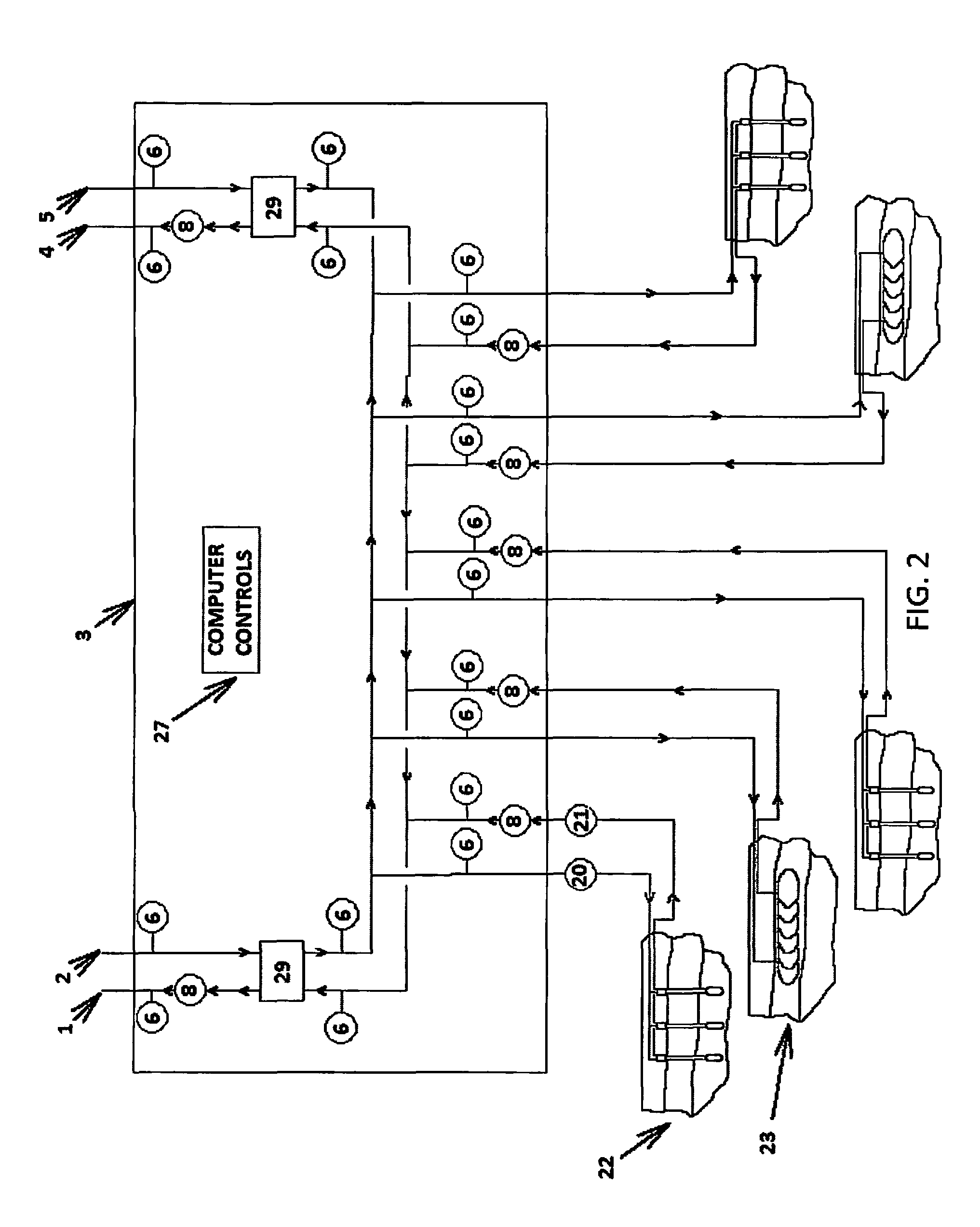Energy chassis and energy exchange device
a technology of energy chassis and energy exchange device, which is applied in the direction of ac network voltage adjustment, heat storage plant, special data processing applications, etc., to achieve the effect of simplifying the design and construction of the building energy system, efficient meeting building energy requirements, and increasing the efficiency of building heating and cooling systems
- Summary
- Abstract
- Description
- Claims
- Application Information
AI Technical Summary
Benefits of technology
Problems solved by technology
Method used
Image
Examples
Embodiment Construction
[0058]Before explaining the disclosed embodiments of the present invention in detail it is to be understood that the invention is not limited in its application to the details of the particular arrangements shown since the invention is capable of other embodiments. Also, the terminology used herein is for the purpose of description and not of limitation.
[0059]The following is a list of reference numerals used in the description and the drawings to identify components:
[0060]
17 variable volume circulation14 computer-based control systempump15 supply connection from “cool”20 geothermal earth heat exchangerside of energy exchange devicereturn16 return connection to “cool” side21 geothermal earth heat exchangerof energy exchange devicesupply27 exchange computer22 Vertical closed loop geothermal23 horizontal, “Slinky” closed loopheat exchangegeothermal heat exchanger1 hot fluid return29 heat exchanger2 hot fluid source31 energy sys management3 energy chassiscomputer4 cold fluid return32 r...
PUM
 Login to View More
Login to View More Abstract
Description
Claims
Application Information
 Login to View More
Login to View More - R&D
- Intellectual Property
- Life Sciences
- Materials
- Tech Scout
- Unparalleled Data Quality
- Higher Quality Content
- 60% Fewer Hallucinations
Browse by: Latest US Patents, China's latest patents, Technical Efficacy Thesaurus, Application Domain, Technology Topic, Popular Technical Reports.
© 2025 PatSnap. All rights reserved.Legal|Privacy policy|Modern Slavery Act Transparency Statement|Sitemap|About US| Contact US: help@patsnap.com



